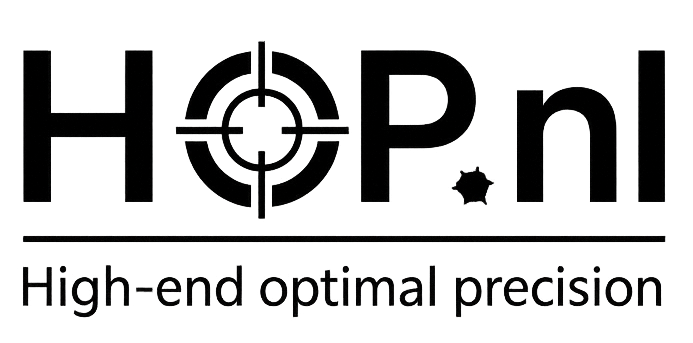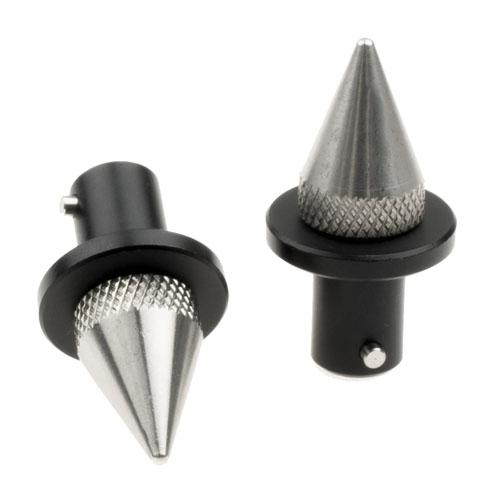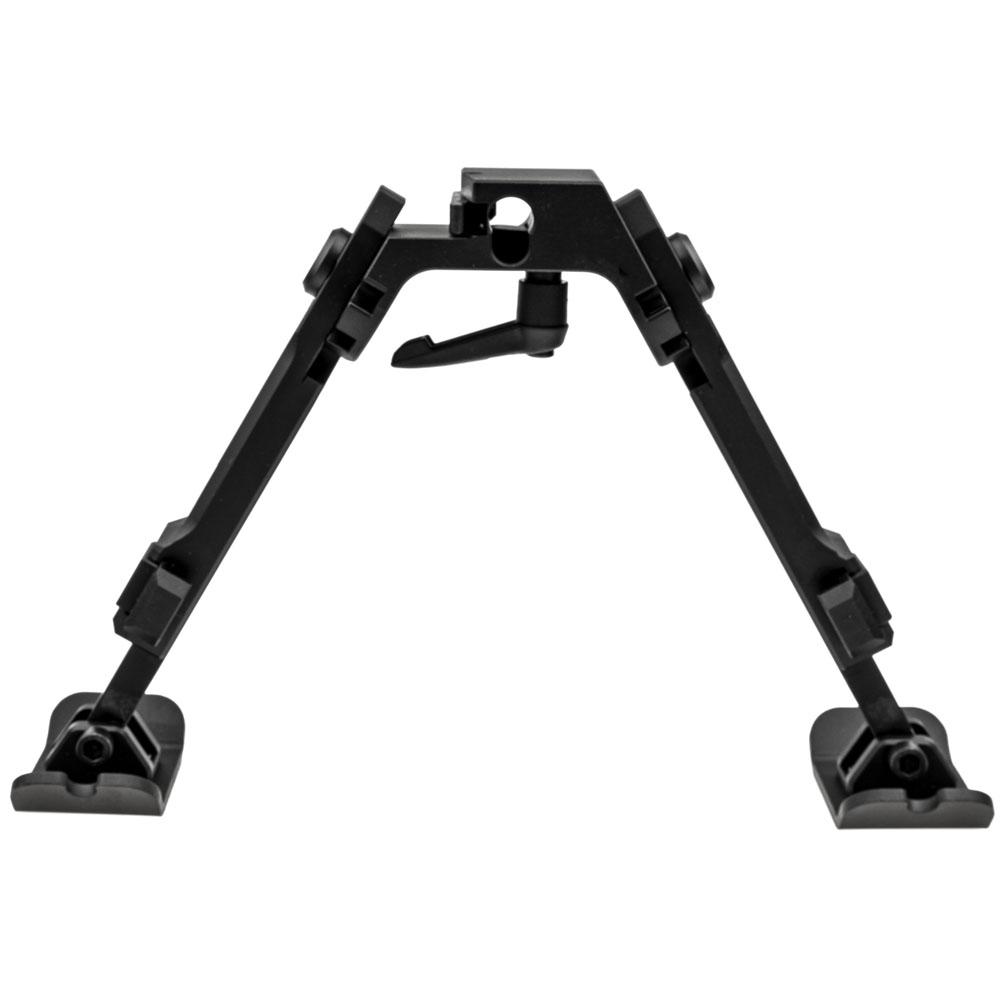 A quality bipod is just as essential for the modern precision shooter as a high-grade riflescope. Whether you're shooting at long range, competing in F-Class matches, or hunting at ethical distances, the right rifle support can make the difference between a hit and a miss. But with so many different models, heights, and construction methods on the market, how do you choose the bipod that perfectly suits your discipline and shooting style?
A quality bipod is just as essential for the modern precision shooter as a high-grade riflescope. Whether you're shooting at long range, competing in F-Class matches, or hunting at ethical distances, the right rifle support can make the difference between a hit and a miss. But with so many different models, heights, and construction methods on the market, how do you choose the bipod that perfectly suits your discipline and shooting style?
In this article, we compare four leading bipod systems, each with their own strengths: the versatile Fortmeier bipods (H171, H184, and H210) from Germany, the ultralight SleipnerX Gen3 Carbon from Denmark, the competition-focused Bears F-TR Bipod, and the robust GRS Bipod Heavy Duty from Norway. We examine technical specifications, practical applications, and help you determine which system best fits your shooting style.
Why a quality bipod makes the difference
In long-range precision shooting, every shot is influenced by the stability of your platform. A good bipod eliminates micro-movements, absorbs recoil consistently, and provides a repeatable reference point for each shot. While budget bipods often show play in the joints or flex under the pressure of heavy calibers, premium bipods offer the rigidity and precision needed for groups measuring just centimeters at hundreds of meters distance.
Modern bipods go beyond simply supporting your rifle. They offer cant adjustment for uneven terrain, adjustable leg heights for different shooting positions, and various foot options for varying surfaces. For F-Class shooters using shooting benches, smooth ski feet are ideal, while hunters in the field need spike feet that find grip on soft forest ground. The best bipod adapts to your conditions, not the other way around.
Fortmeier bipods: German precision in three formats
 Fortmeier bipods are globally recognized as one of the most stable and robust rifle support systems currently available. These German precision products have been trusted by competition shooters and long-range specialists for decades. The unique 5-position bridge system allows you to set the legs in 0°, 45°, 90°, 135°, and 180°, providing maximum adaptability to any terrain and shooting position.
Fortmeier bipods are globally recognized as one of the most stable and robust rifle support systems currently available. These German precision products have been trusted by competition shooters and long-range specialists for decades. The unique 5-position bridge system allows you to set the legs in 0°, 45°, 90°, 135°, and 180°, providing maximum adaptability to any terrain and shooting position.
Fortmeier offers three different height models, each designed for specific applications:
- H171: Adjustable from 171mm to 210mm, weighs approximately 510g. Perfect for prone shooting and low shooting positions. This compact model is ideal for shooters who want minimal weight without compromising stability.
- H184: Adjustable from 184mm to 235mm, weighs approximately 520g. The most versatile option, suitable for most shooting disciplines and terrains. This is the most popular choice among precision shooters.
- H210: Adjustable from 210mm to 300mm, weighs approximately 620g. Ideal for higher shooting positions, benchrest shooting, or when you need more height adjustment.
An important distinction with Fortmeier is the choice between 6:00 and 12:00 mounting. The 6:00 position (under your rifle) is the most traditional mount with a convenient tension lever on the underside that allows you to adjust cant friction without disassembly. The 12:00 position (above the barrel) is recommended when your rifle has a Picatinny rail above the barrel. The major advantage is that gravity works in your favor: the rifle always hangs straight down and alignment is significantly easier.
All Fortmeier bipods are manufactured from anodized aluminum with high-quality composite components. The legs are adjustable via a spring-loaded push button, and the frame is fully demountable. The construction is so robust that these bipods can be used without problems for calibers up to .50 BMG. Note: this bipod requires a separate Fortmeier Picatinny adapter or ARCA adapter for mounting on your rifle.
SleipnerX Gen3 Carbon: Scandinavian innovation in ultralight carbon
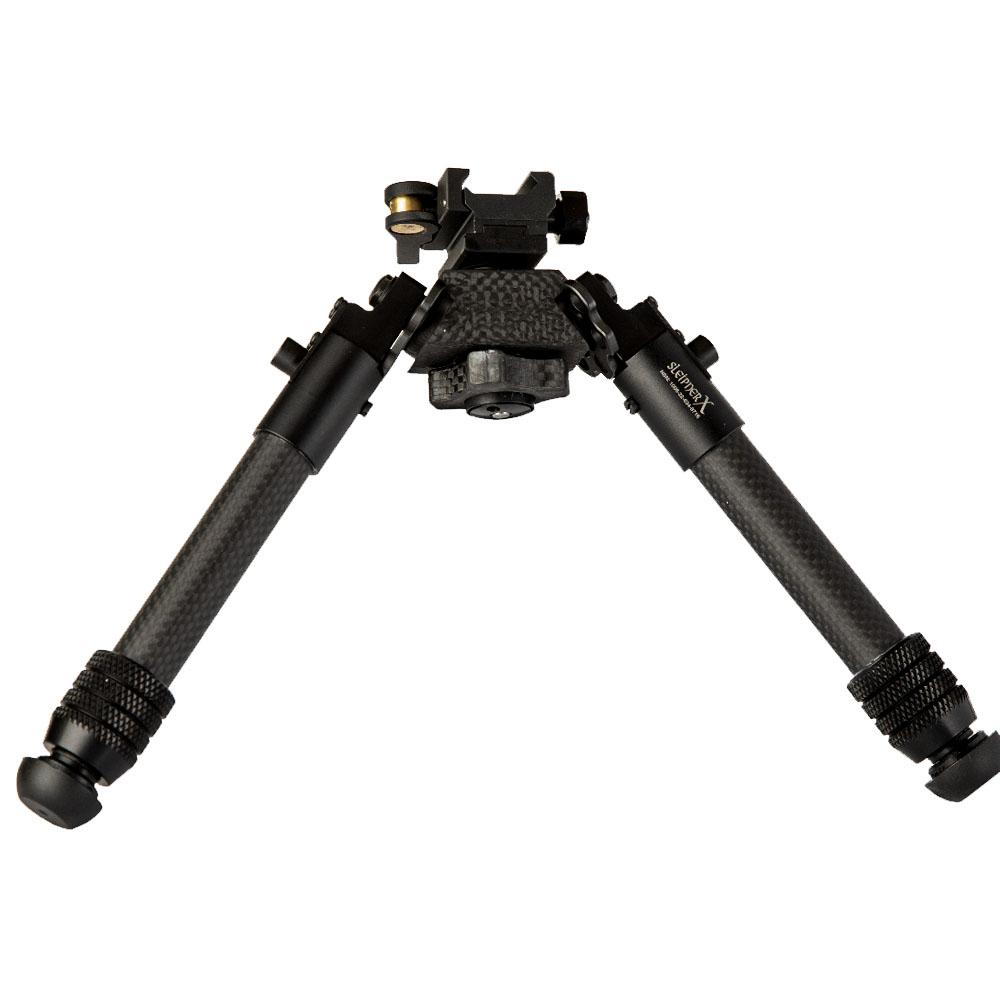 At just 415 grams, the SleipnerX Gen3 Carbon Bipod barely impacts your setup's weight balance, while providing the stability needed for sharp shots at long range. This Danish-developed bipod marks a new standard in precision support for the demanding shooter. The carbon frame combines stiffness with flexibility and effectively absorbs vibrations during shooting.
At just 415 grams, the SleipnerX Gen3 Carbon Bipod barely impacts your setup's weight balance, while providing the stability needed for sharp shots at long range. This Danish-developed bipod marks a new standard in precision support for the demanding shooter. The carbon frame combines stiffness with flexibility and effectively absorbs vibrations during shooting.
A notable detail: the Danish military has chosen the SleipnerX bipod for all their Colt C20 rifles. When defense units trust a product for operational deployment, you know the design has been thoroughly tested under demanding conditions. This military validation gives confidence that the bipod can withstand intensive use and continues to perform when it really matters.
Versatility starts with the mounting system. Both a quick detach Picatinny and an Arca Swiss mount are included as standard, allowing you to mount the bipod on virtually any modern precision rifle without purchasing additional adapters. The height adjustment from 17.5 to 24 cm provides sufficient range for both prone and seated shooting positions.
The comprehensive package of feet distinguishes this bipod from the competition. You receive three complete sets:
- Spike feet: Optimal grip on soft ground and grass, ideal for field shooting
- Rubber feet: Stability on hard surfaces without damaging shooting benches
- Ski feet: Glide smoothly over irregular terrain during fine-tuning of your shot
This variation makes the bipod suitable for any shooting environment, from indoor ranges to field conditions. For precision shooters who regularly shoot at varying distances, the SleipnerX Gen3 offers the stability needed to keep groups tight. The wide leg angle creates a solid base that minimizes lateral movement, essential when shooting with more powerful calibers.
Bears F-TR Bipod: German precision engineering for F-Class competitions
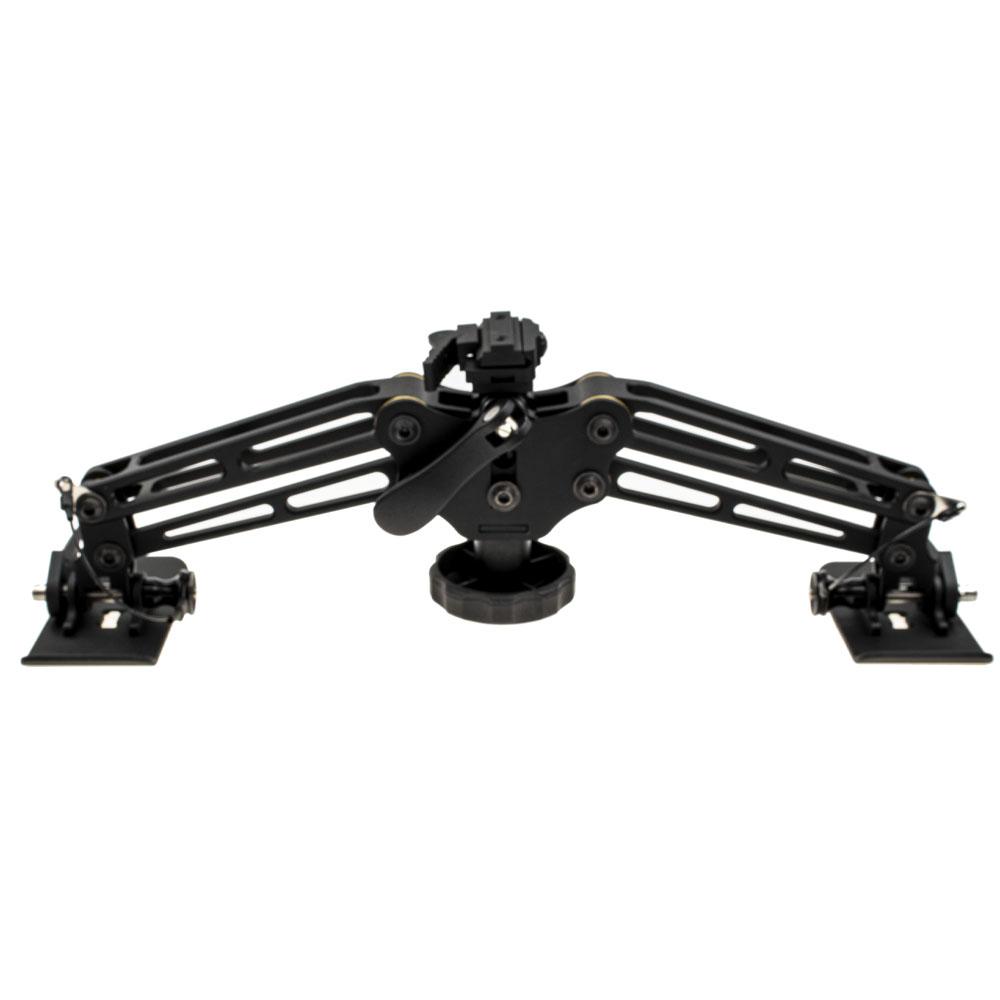 The Bears F-TR Bipod is a high-quality rifle support specifically developed for F-Class competition shooting and long-range precision work. This fixed bipod is entirely manufactured in Germany by Bears Innovations and combines a sleek CNC-machined aluminum design with exceptional stability for shot-to-shot repeatability.
The Bears F-TR Bipod is a high-quality rifle support specifically developed for F-Class competition shooting and long-range precision work. This fixed bipod is entirely manufactured in Germany by Bears Innovations and combines a sleek CNC-machined aluminum design with exceptional stability for shot-to-shot repeatability.
With a total weight of just 1005 grams, this new generation Bears bipod is a full 600 grams lighter than its predecessor, while stability has actually increased. The hard anodizing protects against scratches and wear, even during intensive use on the range. The height is precisely adjustable between 115mm and 205mm, allowing you to perfectly set your rifle for different shooting positions.
What's special about this bipod is the compensation mechanism: the Picatinny mount moves upward, automatically compensating for the play in the height adjustment wheel's threading. This results in consistent and repeatable settings. The lateral cant is both adjustable and lockable, so you can level your rifle on uneven terrain and fix this setting for multiple shots.
The skids on the bottom are cleverly designed and automatically adjust to the rifle's angle. Each skid also features a ground pin that provides extra grip on soft surfaces like wooden shooting benches or sandy ground, preventing unwanted movement during the shot. At full extension, the maximum width is 400mm, providing a stable base that can easily handle even heavier calibers.
For shooters serious about F-Class competitions, benchrest shooting, or developing ultra-precise handload ammunition, the Bears F-Class Bipod offers the stability and repeatability needed for top performance. The combination of German precision engineering, weight savings without compromising rigidity, and compatibility with Atlas Foot Print components makes this an investment that will last for years.
GRS Bipod Heavy Duty: Norwegian robustness for ELR and F-Class
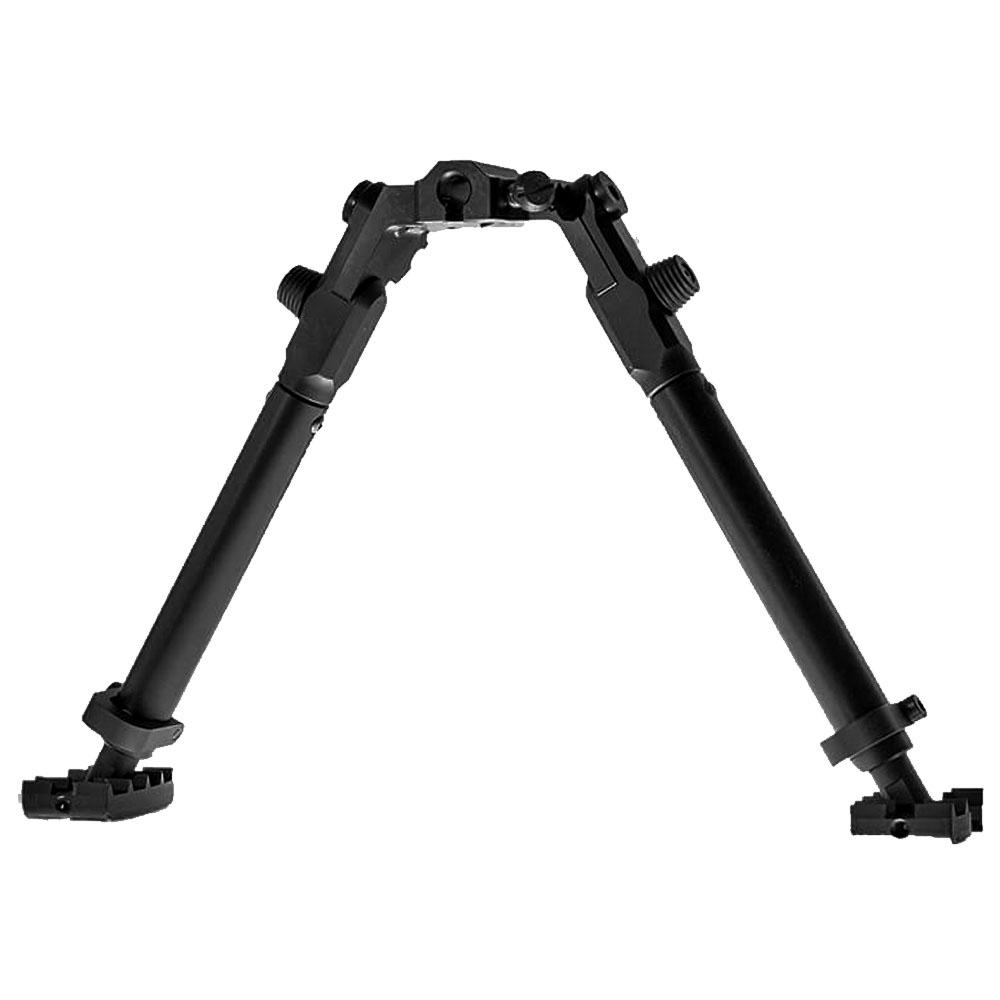 The GRS Bipod is a robust, heavy-duty bipod developed for shooters who make no compromises on stability and accuracy. Originally designed for F-Class, ELR (Extreme Long Range), and other precision disciplines, this Norwegian bipod offers a unique combination of robustness, simple operation, and maximum adaptability.
The GRS Bipod is a robust, heavy-duty bipod developed for shooters who make no compromises on stability and accuracy. Originally designed for F-Class, ELR (Extreme Long Range), and other precision disciplines, this Norwegian bipod offers a unique combination of robustness, simple operation, and maximum adaptability.
The GRS Bipod uses a spigot mount system instead of the traditional clamp rings you see on many other bipods. GRS has designed their spigot system with tighter tolerances than most spigot-mounted bipods on the market, resulting in less play and a more solid connection. Once the spigot adapter is mounted on your rifle, you simply slide the bipod over the spigot and turn the locking lever tight.
The GRS Bipod offers generous height adjustment from 220mm to 315mm, measured from the center of the spigot to the ground. Adjustment occurs in 10mm steps, providing sufficient fine-tuning for most shooting positions. Height adjustment works via large, spring-loaded push buttons that you can easily operate, even with gloves on.
A major advantage of the GRS Bipod is compatibility with Fortmeier mounting systems. This means you can use high-quality Fortmeier adapters for Picatinny, M-LOK, ARCA/RRS, and other rails. This compatibility makes the GRS Bipod extremely versatile: you can use one bipod on multiple rifles by simply choosing the right adapter.
A clever detail is the reversible feet. Each foot can be individually rotated to choose between two different surfaces: the smooth side for use on hard surfaces like concrete, wood, or shooting benches, and claws for soft surfaces like earth, grass, mud, or sand. The claws dig slightly into the surface for maximum grip and stability.
The GRS Bipod is built like a tank. With a weight of approximately 920 grams without adapter, this is heavier than some ultralight competition bipods, but the weight contributes to stability during the shot. The combination of high-quality aluminum and stainless steel provides an optimal balance between weight and strength. Note: this bipod is supplied without mounting adapter, which must be purchased separately.
How to choose the right bipod for your discipline
The choice of bipod depends heavily on the type of shooting you do and the conditions in which you operate. For F-Class and benchrest shooters who primarily shoot from stable shooting benches, the Bears F-TR Bipod or GRS Bipod are excellent choices. These heavier, fixed bipods offer maximum stability and are designed for repetitive shooting from the same position.
For PRS shooters and tactical disciplines where mobility and quick position changes are important, the Fortmeier H171 or H184 is ideal. The 5-position leg system allows you to quickly adapt to different terrain conditions, and the relatively low weight (510-520g) makes transport over longer distances easier. The ability to fold legs forward, backward, and sideways provides enormous flexibility during dynamic stages.
Hunters who walk long distances and need to save weight without sacrificing stability often choose the SleipnerX Gen3 Carbon. At just 415 grams, this is the lightest option in this comparison, while the carbon construction provides sufficient stiffness for accurate shots. The complete package with three different foot sets makes this bipod suitable for varying hunting terrains.
The height adjustment also plays an important role. Do you primarily shoot prone? Then a more compact model like the Fortmeier H171 (171-210mm) or SleipnerX Gen3 (175-240mm) is sufficient. For higher positions, such as from a shooting bench or in benchrest, models with more height range like the Fortmeier H210 (210-300mm) or GRS Bipod (220-315mm) are better suited.
Finally, don't forget the mounting system. Modern chassis rifles with ARCA rails benefit from ARCA-compatible adapters, while traditional Picatinny rails remain the most universal option. For shooters with multiple rifles, it may be wise to choose a bipod system with interchangeable adapters, such as the Fortmeier or GRS with their extensive adapter ecosystem.
Conclusion: invest in stability that lasts for years
A quality bipod is not a luxury but a necessity for anyone serious about precision shooting. Whether you choose the versatile Fortmeier bipods with their unique 5-position system, the ultralight SleipnerX Gen3 Carbon for maximum mobility, the competition-focused Bears F-TR for benchrest perfection, or the robust GRS Heavy Duty for extreme stability, each of these systems represents the pinnacle of European precision engineering.
The investment in a premium bipod pays off in improved shooting results, greater consistency, and years of reliability. While budget alternatives show signs of wear after a season of intensive use, these top models continue to perform under the most demanding conditions. The difference between an average and excellent bipod is not measured in euros or dollars, but in millimeters of group size at hundreds of meters distance.
View the complete range of bipods and rifle rests at HOP and discover which system perfectly matches your shooting discipline. With the right bipod, you lay a solid foundation for precision that makes the difference between good and excellent shooting.

